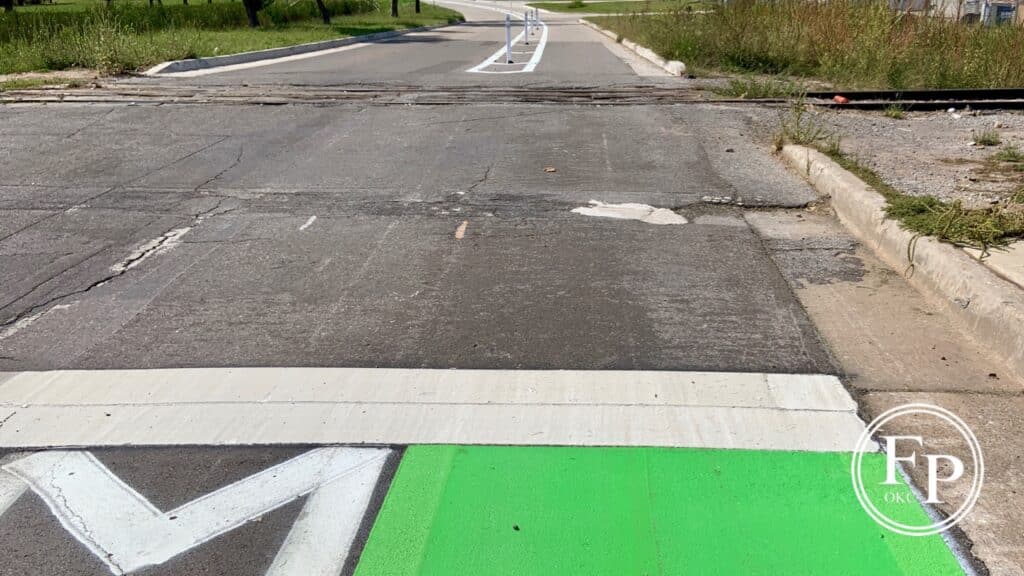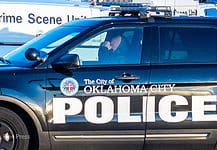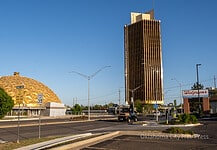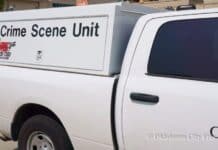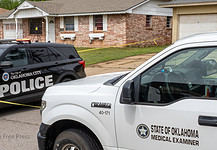Last Updated on September 25, 2020, 9:20 AM | Published: September 25, 2020
The first mile of protected bike lanes has been added to the growing system of bike infrastructure throughout the metro. Marked bike lanes have been expanded in the City for several years now.
It comes just in time for the annual Bike to Work Day Friday sponsored by the Association of Central Oklahoma Governments (ACOG).
The stretch along General Pershing Boulevard between Pennsylvania and May west of downtown was showcased by Ward 6 Councilwoman JoBeth Hamon and city staff Thursday.
“I moved here six years ago and was shocked to see that we had bike lanes but none of them protected,” Hamon told Free Press. “It’s definitely a huge step in the right direction.”
Hamon walks, rides her bike, and rides EMBARK busses to commute and do business daily.
See the rest of her comments in this short segment where we interviewed her about the development of the protected bike lanes.
Type of protected lanes
The type of lanes featured Thursday have flexible poles installed at intervals along the route with reflectors to remind car drivers that they are to stay out of the bike lane that is close to the curb.
However, they are not designed to provide any kind of physical barrier between motor vehicles and bikes.
We asked Hamon to describe the different types of protected bike lanes that have been developed around the world so far.
Basically, this first stretch of protected lane provides the least actual protection for the bike rider. The poles are designed to snap back into place after being hit by autos.
Other types of protected lanes may be on the curb side of a row of parallel-parked cars as protection. Others have large planters between the bike lane and the auto lane. And, the most protected versions have a continuous curb or median between the bike lane and the auto lane.
Network
The protected lanes are a small part of the planned network included in bikewalkokc, the City’s master plan for cyclists and pedestrians currently being installed in streets throughout the City of Oklahoma City.
The first 50 miles of that system are currently being developed. They are designed to also connect riders to the city’s trails system that are separate from city streets.
Some bike commuters partially use the existing trails to keep off of roadways built for auto traffic.
“We’re well on our way to building a connected network that makes active transportation easier,” said Planning Director Geoffrey Butler in a prepared statement. “We’ve got about 50 miles in funded on-street bike projects already in the works, with about $20 million more to come with MAPS 4.”
Commuters
Several members of the Oklahoma Bike Society (OBS) were on hand to try out the lanes Thursday and demonstrate the lanes for the press. (Pictured in the feature photo.)
Tony Dela Vega, president of OBS said that there are two kinds of riders, recreational and commuter.
He said the protected lanes especially help commuters because they are riding during the day when auto traffic is heaviest and they may be pulling a cargo trailer with children or goods that they are taking back home.
“Roads like this with protected barriers are going to be very important to them,” he said. It’s one less thing to have to worry about vehicles, you know, running over your family members and knowing that you have an area that’s just there for you.”
“With this kind of barrier, you actually have warning systems in here as well for motorists, they know that they’re drifting. So that that protects them as well,” he said.
Concerns
Dela Vega and Moni Bieser, another member of OBS who was there trying out the new lanes Thursday did have some concerns and a wait-and-see approach to the protected lanes.
Dela Vega said that he is waiting to see if the city street sweeping machines will be able to keep the protected lanes clean of debris which is a problem on many bike lanes where even a branch in the roadway that a car would easily roll over would cause a bike rider to crash.
Bieser pointed us to the railroad crossing along the stretch where the old, worn-out fill between tracks were a hazard to bike riders.
We asked Maxton Harris, an assistant planner with the City, about what could be done with the railroad crossing. He said that railroad crossings take more time and coordination with the railroads that own the railroad right-of-way to upgrade the crossings.
Founder, publisher, and editor of Oklahoma City Free Press. Brett continues to contribute reports and photography to this site as he runs the business.


